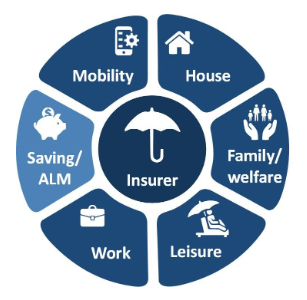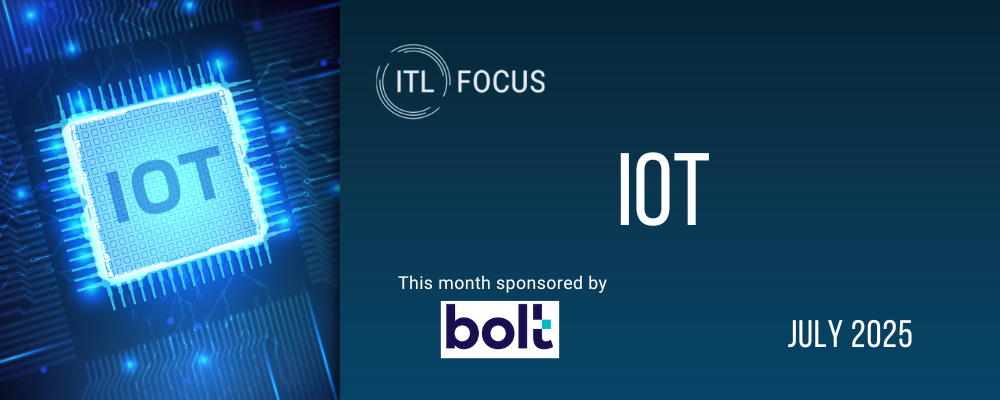A few years ago, it was estimated that in a normal day another 127 devices are connected to the internet each second. This trend toward an Internet of Things is growing exponentially. Many global insurance companies are working on integrating IoT-based services into their insurance offers. Unfortunately, how to use this technology has been largely misunderstood. I’ve been lucky to work with some of the few players that have been successful in their usage of IoT. Through traditional distribution channels, these players are selling products that are bundles between insurance coverages and IoT-based services. Many have been able to get the service paid for by the policyholders, according to research by the IoT Insurance Observatory, an insurance think tank that has aggregated almost 60 insurers, reinsurers and tech players between North America and Europe. Those that have managed to develop a product with a portfolio of a significant size and considerable penetration have had a very specific approach. They first use interesting storytelling about successes that justifies additional fees. This is the case with car telematics in Italy and with the South African Discovery Drive, which represent global best practices in terms of telematics use in auto insurance: The customer pays an annual fee for telematics-based roadside assistance and a range of other services.
Sharing Value With Clients All the insurance products that have succeeded with an IoT approach share economic value with customers. See also: 3-Step Approach to Big Data Analytics In auto insurance telematics, for example, data is needed to provide assistance, to provide traffic information and to find a car. This data can also be used to manage claims better and avoid fraud, to influence the customer’s driving style or to establish more accurate pricing. On top of that, if you focus your storytelling on some tailor-made services, you can encourage lower risks to select your product. All these elements – I call them five value-creation levers (fees for services, loss control, change of behaviors, risk-based pricing and risk self-selection) - boost profits. All the successful products have shared the value with policyholders through discounts, rewards, cash back…. The same is going to happen with homeowners insurance.
Dynamic Pricing on the Basis of Behavior In the life sector, the discourse is different. The IoT Insurance Observatory mapped more than 20 initiatives over the course of 2018, and there are more failures than successes. However, there is a best practice that has managed to integrate data from wearable devices, with contextual data on customer behavior that is collected in a variety of ways. This best practice is the South African Discovery. They have created life insurance products where the client's price increases year by year as a result of age, but could stay stable or even decrease if the customer's physical activity is sufficient. A U.S. company has implemented a process where a customer who requests a quote finds the option to share the data he has collected on his physical activity, to obtain a personalized offer. Commercial Lines Still at an Experimental Level Many successful IoT-based approaches in personal lines can be applied to commercial lines. However, applications are still experimental. I expect these experiments to end in complete IoT insurance products in the U.S. before Europe, but it will take a few years before significant portfolios are created. The most interesting experiments are in workers’ compensation and commercial property. In the world of SMEs, it will be necessary to specialize by sub-sector: It is one thing to talk about schools, another about residential skyscrapers and yet another about offices. Another area with potential is manufacturing, because of what is being called Industry 4.0. This megatrend is not yet mature, but some members of the IoT Insurance Observatory are scouting 4.0 technologies. The need for installation and tailoring of the technological and service components on the premises of a company will be a key.  The World of Ecosystems The largest international insurance groups are closely monitoring ecosystems. As of today, IoT usage is sold as a closed option: The insurer chooses its own black box, the set of sensors, the app or the specific wearable items and obtains the data necessary to optimize its own use cases. To understand how an insurer could interact with emerging ecosystems is a key issue that will be addressed in the coming years by the IoT Insurance Observatory. I think that, rather than imagining which insurance product to offer, the first issue to address is how to sell customers products related to offers that come from the ecosystems. See also: The Dazzling Journey for Insurance IoT Insurers cannot stop the IoT megatrend. They can only decide to leverage this data or to ignore it.
The World of Ecosystems The largest international insurance groups are closely monitoring ecosystems. As of today, IoT usage is sold as a closed option: The insurer chooses its own black box, the set of sensors, the app or the specific wearable items and obtains the data necessary to optimize its own use cases. To understand how an insurer could interact with emerging ecosystems is a key issue that will be addressed in the coming years by the IoT Insurance Observatory. I think that, rather than imagining which insurance product to offer, the first issue to address is how to sell customers products related to offers that come from the ecosystems. See also: The Dazzling Journey for Insurance IoT Insurers cannot stop the IoT megatrend. They can only decide to leverage this data or to ignore it.







